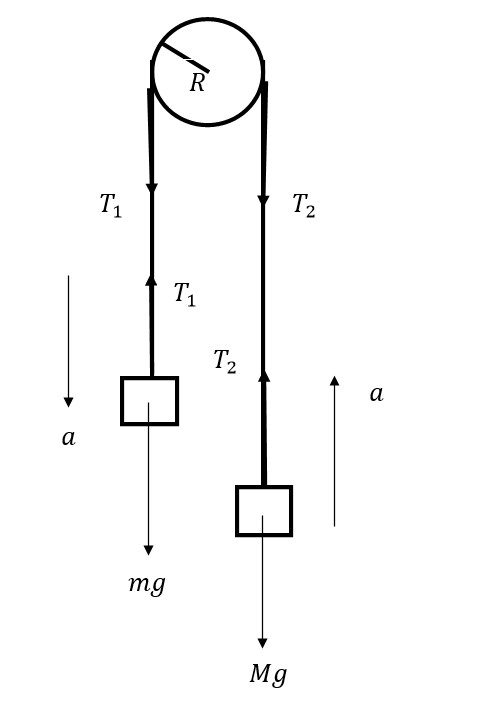a) What is the magnitude of the acceleration of each block? b) How much time would I take for the 4.3kg block to fall to the floor?
a) What is the magnitude of the acceleration of each block?
b) How much time would I take for the 4.3kg block to fall to the floor?

Newton's Second law of motion
According to Newton's Second Law of motion, the rate of change of momentum of an object is directly proportional to the net external force applied to the object. Mathematically it is represented as
The LHS is the net external force acting on an object of mass causing an acceleration of
For rotation, the net external torque acting on a rigid body is equal to the moment of inertia times the angular acceleration.
a) Let the mass of the bigger block be and the smaller block be . Let us draw the diagrams showing all the forces.

Let us consider the bigger block and the upward as positive. Balancing forces and by Newton's Second law we get
For the smaller block
Let us consider the anti-clockwise torque to be positive then the torque due to frictional force will be opposite to the motion of the pulley. Thus the torque due to frictional force will be in the clockwise direction. Therefore by Newton's second law of motion for rotation
is the torque due to friction on the pulley. The moment of inertia of the pulley which is in the shape of a ring about an axis passing through the center and perpendicular to the surface is
For no slipping condition
This gives
This gives
Let us substitute all the values
b) From the kinematics equation
we can find the time for the 4.3 kg body to reach the ground.
Since the displacement is in the downward direction
Let the time taken be . Thus
Trending now
This is a popular solution!
Step by step
Solved in 3 steps with 1 images
